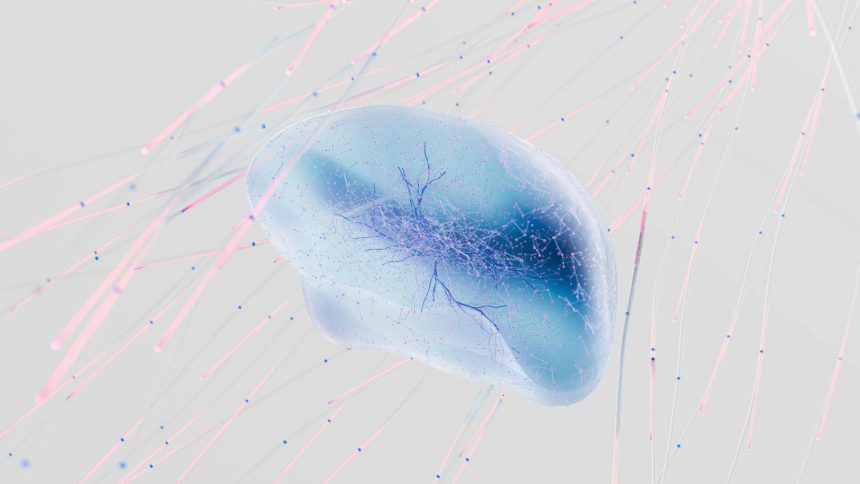# Neural Networks: Unlocking the Next Frontier in AI
The world of artificial intelligence is in constant flux, with breakthroughs emerging at an unprecedented pace. At the heart of many of these transformative advancements lies a powerful concept: the **neural network**. But what exactly are these sophisticated systems, and how are they poised to revolutionize our future? This exploration delves deep into the fascinating realm of neural computing, demystifying artificial neural networks (often shortened to neural nets or ANNs) and shedding light on their immense potential. From understanding their fundamental principles to envisioning their future applications, we’ll uncover why neural networks are not just a buzzword, but the engine driving the next wave of AI innovation.
## Understanding the Building Blocks: What is a Neural Network?
Imagine the human brain, a complex network of billions of interconnected neurons, each firing signals to process information. Artificial neural networks are computational models inspired by this biological marvel. They are designed to recognize patterns, learn from data, and make decisions, much like their organic counterparts.
### The Neuron: The Digital Brain Cell
At its core, a neural network is composed of interconnected processing units called artificial neurons or nodes. These nodes are organized in layers: an input layer, one or more hidden layers, and an output layer.
* **Input Layer:** Receives the raw data, such as pixels in an image or words in a sentence.
* **Hidden Layers:** These are the workhorses of the network. They process the input data through a series of mathematical operations, extracting complex features and relationships. The more hidden layers a network has, the deeper it is, allowing it to learn more intricate patterns.
* **Output Layer:** Produces the final result, which could be a classification (e.g., “cat” or “dog”), a prediction (e.g., stock prices), or a generated piece of content.
### How Do They Learn? The Power of Training
Neural networks learn through a process called training. This involves feeding the network vast amounts of data and adjusting the connections (weights) between neurons until it can accurately perform a desired task. When the network makes an error, an algorithm called backpropagation is used to adjust the weights, guiding the network towards a more accurate outcome.
## Beyond the Basics: Deeper Dives into Neural Computing
The concept of neural networks is broad, encompassing various architectures and methodologies, each tailored for specific applications. Understanding these nuances reveals the true power and versatility of this technology.
### The Evolution of Neural Network Architectures
From early, simpler models to the complex deep learning architectures of today, neural networks have undergone significant evolution.
1. **Feedforward Neural Networks:** The most basic type, where information flows in one direction, from input to output.
2. **Convolutional Neural Networks (CNNs):** Particularly adept at processing grid-like data, such as images. They are the backbone of modern computer vision.
3. **Recurrent Neural Networks (RNNs):** Designed to handle sequential data, making them ideal for natural language processing (NLP) tasks like translation and text generation.
4. **Transformers:** A more recent innovation that has revolutionized NLP, allowing for more efficient and effective processing of long sequences of text.
### The Impact of Deep Learning
Deep learning is essentially a subfield of machine learning that utilizes neural networks with many layers (deep neural networks). This depth allows these networks to learn hierarchical representations of data, meaning they can automatically discover intricate features without explicit human programming. This has led to groundbreaking achievements in areas like image recognition, speech synthesis, and autonomous driving.
## Potential Improvements and Future Frontiers
The current capabilities of neural networks are impressive, but the potential for further improvement and new applications is staggering. Researchers are constantly pushing the boundaries, exploring novel architectures and training techniques.
### Enhancing Efficiency and Accuracy
One of the key areas of focus is improving the efficiency and accuracy of neural networks. This includes:
* **Reducing computational costs:** Training large neural networks requires significant computing power. New algorithms and hardware are being developed to make this process more efficient.
* **Improving generalization:** Ensuring that networks perform well on new, unseen data is crucial. Techniques like regularization and data augmentation are vital for this.
* **Explainable AI (XAI):** As neural networks become more complex, understanding *why* they make certain decisions is becoming increasingly important, especially in critical applications like healthcare and finance.
### Novel Applications on the Horizon
The continued development of neural networks promises to unlock a host of new applications that could reshape industries and our daily lives.
* **Personalized Medicine:** AI-powered diagnostic tools and drug discovery platforms.
* **Advanced Robotics:** More intelligent and adaptable robots for manufacturing, healthcare, and exploration.
* **Climate Modeling:** More accurate predictions and solutions for environmental challenges.
* **Creative AI:** Generating art, music, and literature with unprecedented sophistication.
## The Broader Implications of Neural Network Advancements
The progress in neural networks is not just about technological prowess; it carries significant societal implications. As these systems become more capable, questions surrounding ethics, bias, and job displacement come to the forefront. Addressing these challenges proactively will be crucial for harnessing the full positive potential of AI.
For a deeper understanding of the underlying principles, exploring resources on computational neuroscience can provide valuable context. [You can find more information on the fascinating field of computational neuroscience here](https://www.scholarpedia.org/article/Computational_neuroscience). Additionally, understanding the broader landscape of AI research offers further insights into where neural networks fit in. [The Association for the Advancement of Artificial Intelligence (AAAI) is a great resource for this](https://aaai.org/).
## Conclusion: The Dawn of a New AI Era
Neural networks are no longer a futuristic concept; they are a present-day reality, driving innovation across countless fields. From recognizing faces in photos to powering virtual assistants, their influence is pervasive. As research continues to unlock new architectures and training methodologies, the capabilities of artificial neural networks will only expand, promising a future where AI plays an even more integral role in solving complex problems and enhancing human potential.
Are you ready to explore the incredible possibilities that neural networks are unlocking for the future of AI?
copyright 2025 thebossmind.com
Featured image provided by Pexels — photo by Google DeepMind





